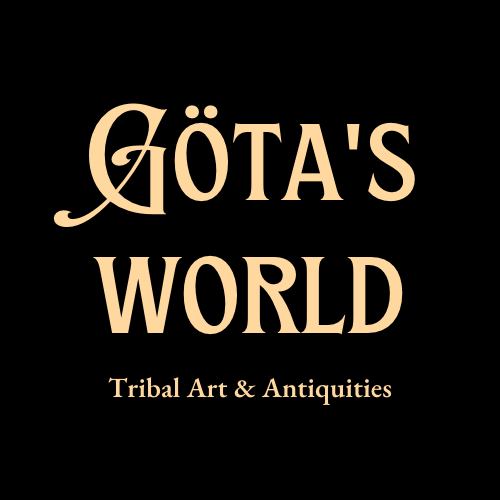Luba or Kusu Male Power Half Figure Kakudji
Luba or Kusu Male Power Half Figure Kakudji
Couldn't load pickup availability
Luba or Kusu people, early to mid. 20th century, Democratic Republic of the Congo
Impressive and fascinating wooden male power half figure, known as a kakudji, skillfully hand-carved in a upright position with rich, espresso-hued surface. This is a wonderful example of the Kasongo style, with tubular long arms ending in hands holding a protruding stomach receiving a accentuated navel, as he gazes forth, jutting out his prominent pointed chin. The torso terminates below with a round plinth carved from the same piece. His sizeable head features closed coffee-bean eyes beneath arched brows, a naturalistic flattened nose, oval raised mouth with full lips, and a short beard, all flanked by a pair of large ears and supported by a thick, tubular neck atop squared shoulders. An elaborate, short hairstyle or raised scarifications crowns the figure, featuring a cylindrical, tiered top. The bowl-shaped projection atop the figure's head is most notable as it holds magical ingredients specially crafted by the medium to activate the spirit within. Magical materials included items thought to have rare and enhancing life powers, such as pulverized fragments of human bone, or the hair of twins. These substances are often kept in the heads of kakudji as the crown of the head is regarded as the site of communication with spirit entities. By supplying the object in this way, the ritual specialist invites the spirit to inhabit the receptacle, which can then be used to assist with particular tasks. Kakudji fetishes exist in several ethnic groups like the Luba, Hemba and Kusu, making it difficult to identify them accurately.
The Luba people are cluster of peoples who inhabit a wide areas of south-central Democratic Republic of the Congo. Their kingdoms were at their zenith between the 17th and 19th century. The Luba traditional religious beliefs included the concept of universal creator (Shakapanga), a Supreme Being (Leza), a natural world and a supernatural world. The supernatural world was where ancestral spirits (bankambo) and other spirits (mikishi, bavidye) lived, and what one joined the afterlife if one lived an ethical life (mwikadilo muyampe). The Luba religions accepts the possibility of communion between the living and the dead. The religious life included prayers, community singing, dances, offerings, rites of passage rituals and invocations. These rituals and services had intermediaries for rites such as priests (nsengha and kitobo). In addition, for anxiety and ailments, a healer (nganga) and the witch (mfwintshi) were in service who would perform divination (lubuko). The Kusu are divided into small villages relatively isolated from each other, especially in the south, where the Luba influence is strongest. The investiture ceremonies for chiefs are similar to those practised among the Luba, but there is no paramount chief who oversees all the Kusu. Instead, there is a series of village chiefs who inherit their positions of power. They worship various nature spirits that trace back to their Mongo origins, recognise ancestor cults that have been borrowed from the Hemba and Luba, and fashion and use powerful magical figures similar to those found among the Songye.
Good condition. Traces of ceremonial use and handling over many years. Strongly encrusted deep dark patina. Traces of magical ingredients. Missing parts due to insect caused damage. Fractures and cracks. Size approx. 21,0cm x 8,5cm x 7,3cm (excluding the modern stand).
Provenance: Swedish private collection.
For a similar examples see:
Power Figure, University of Michigan Museum of Art, Accession Number: 2005/1.223 (https://umma.umich.edu/objects/power-figure-2005-1-223/)
Power Figure, Minneapolis Institute of Art, Accession Number: 2015.62.43 (https://collections.artsmia.org/art/123408/power-figure-kusu-or-zimba)
Half Figure: Female, The Metropolitan Museum of Art, Accession Number: 1976.247.3 (https://www.metmuseum.org/art/collection/search/310183)
References and further reading:
Luba: Visions of Africa, Mary Roberts & Allen F. Roberts, Publisher: 5 Continents Editions Srl, 2007.
Memory: Luba Art and the Making of History, Mary Nooter Roberts & Allen F. Roberts, Publisher: Center for African Art, 1996.
Luba, Mutombo Nkulu-N'Sengha, Encyclopedia Britannica, 2 Dec. 2018. (https://www.britannica.com/topic/Luba-people)
History of Art in Africa: Second Edition, Monica Blackmun Visona, Robin Poynor and Herbert M. Cole, Publisher: Prentice Hall, 2007.
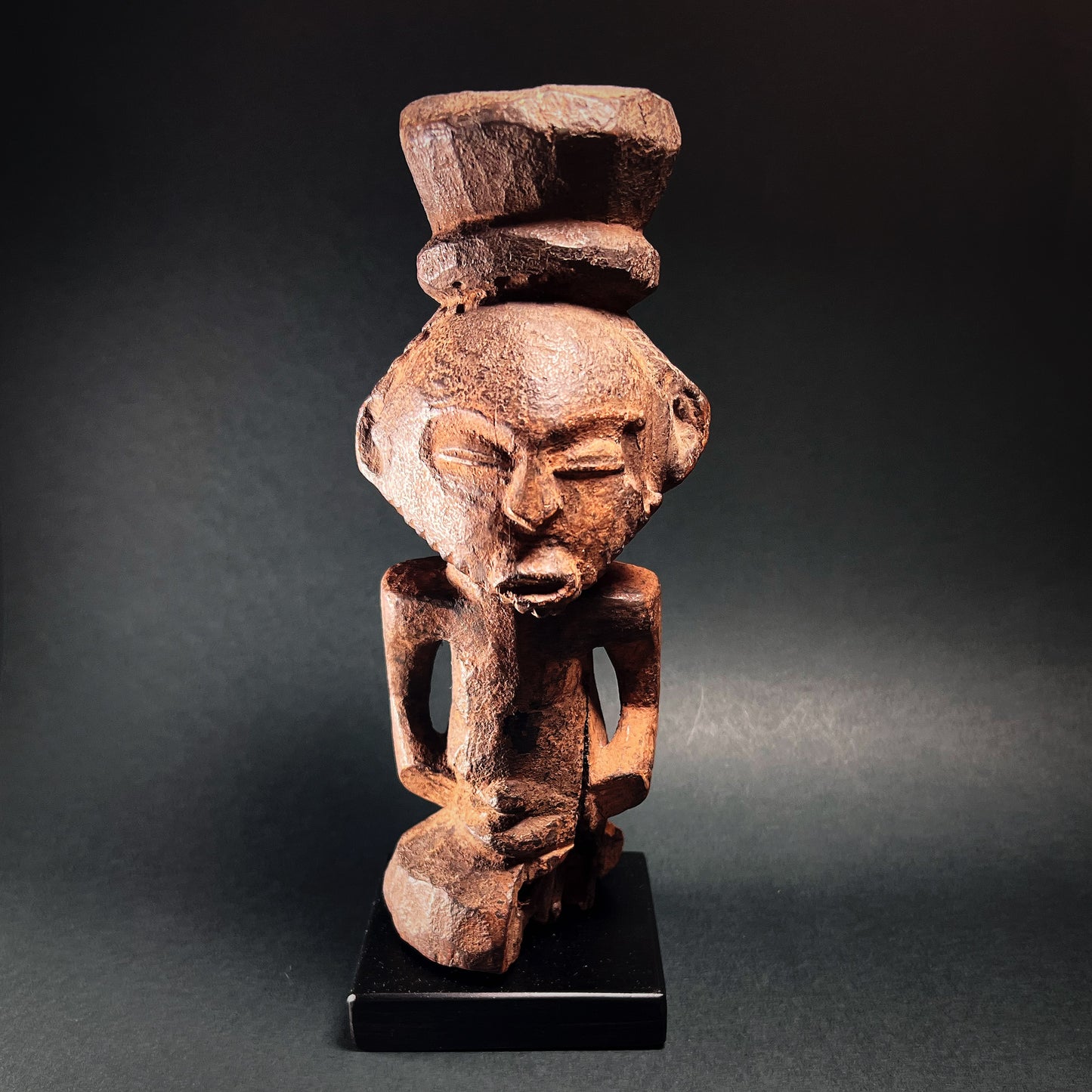
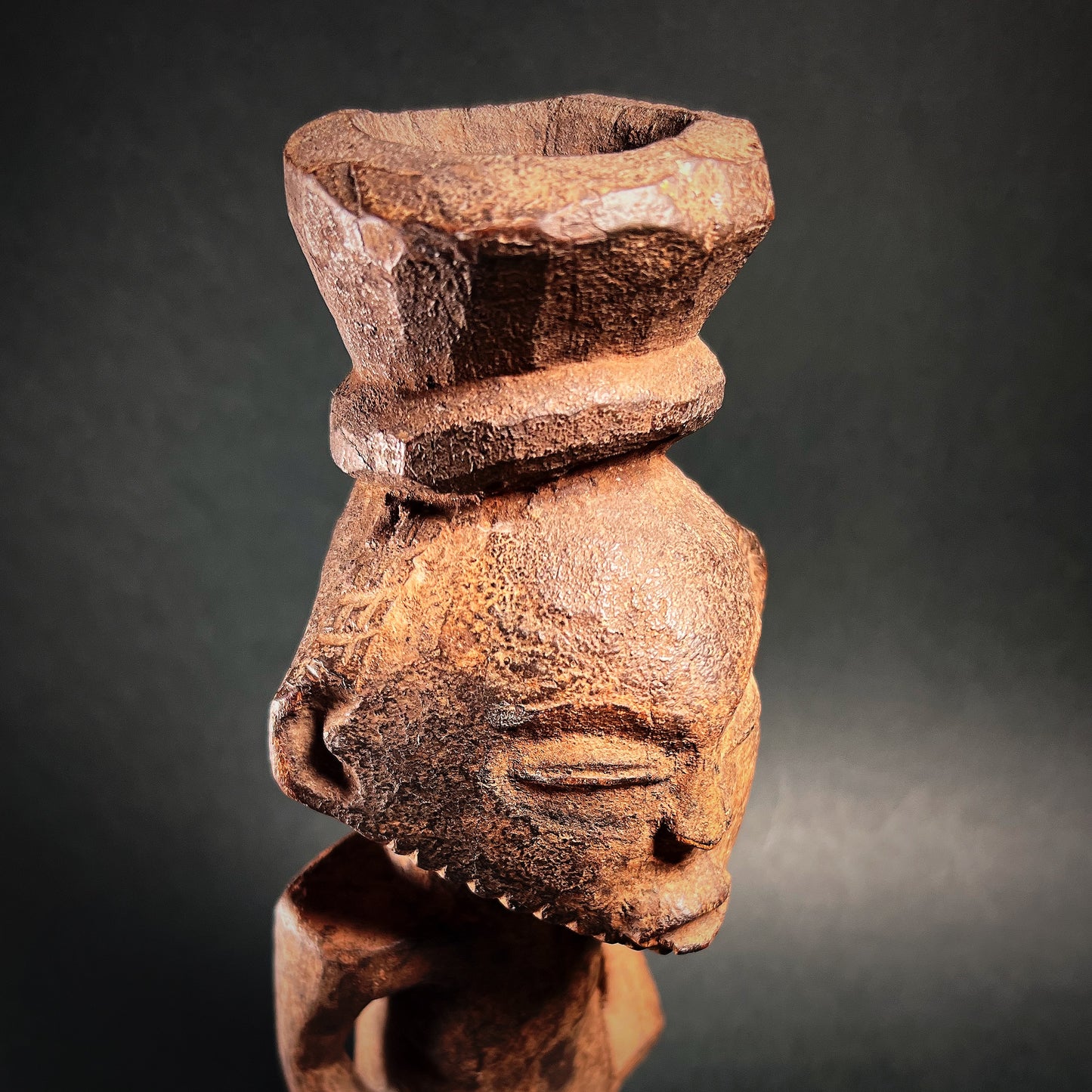
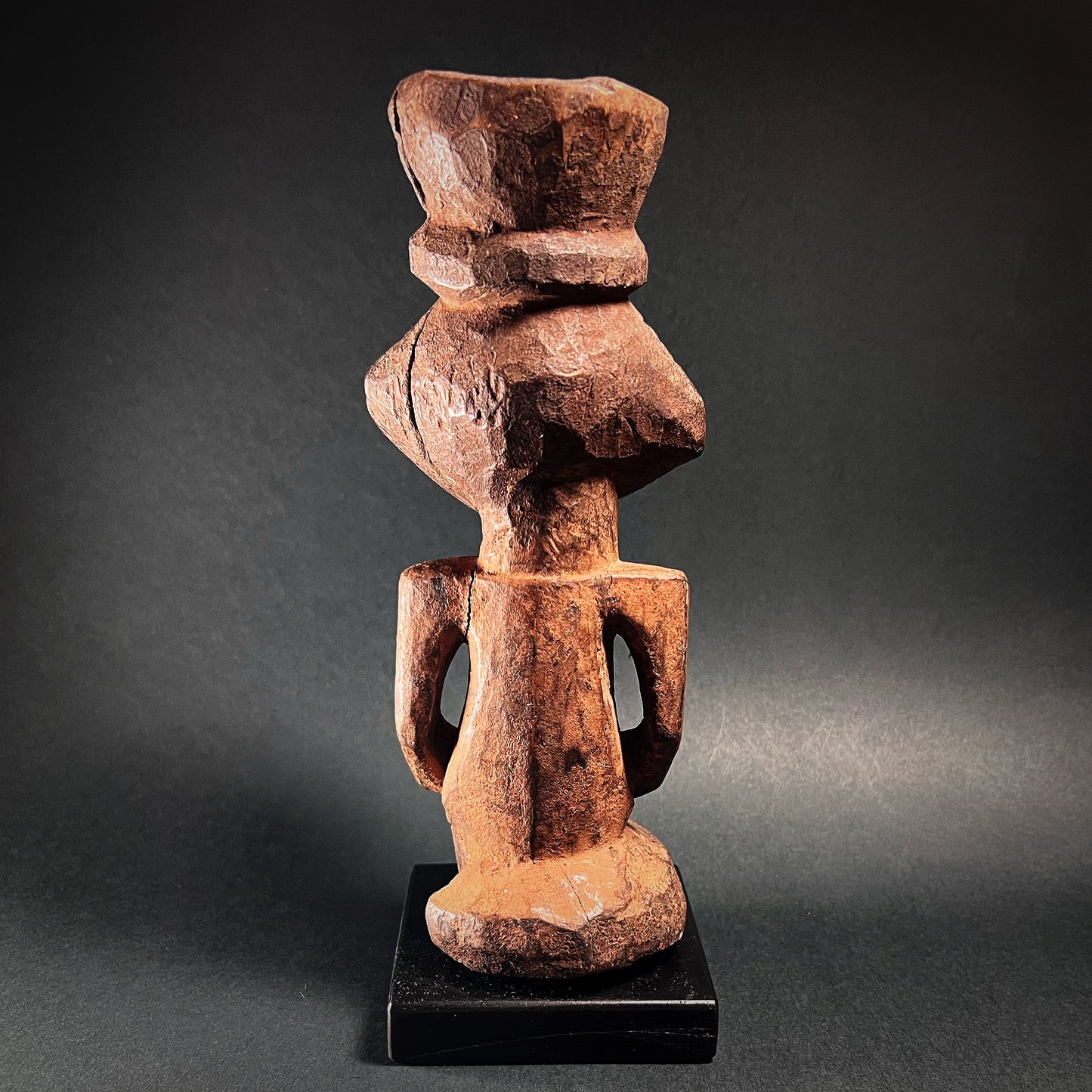
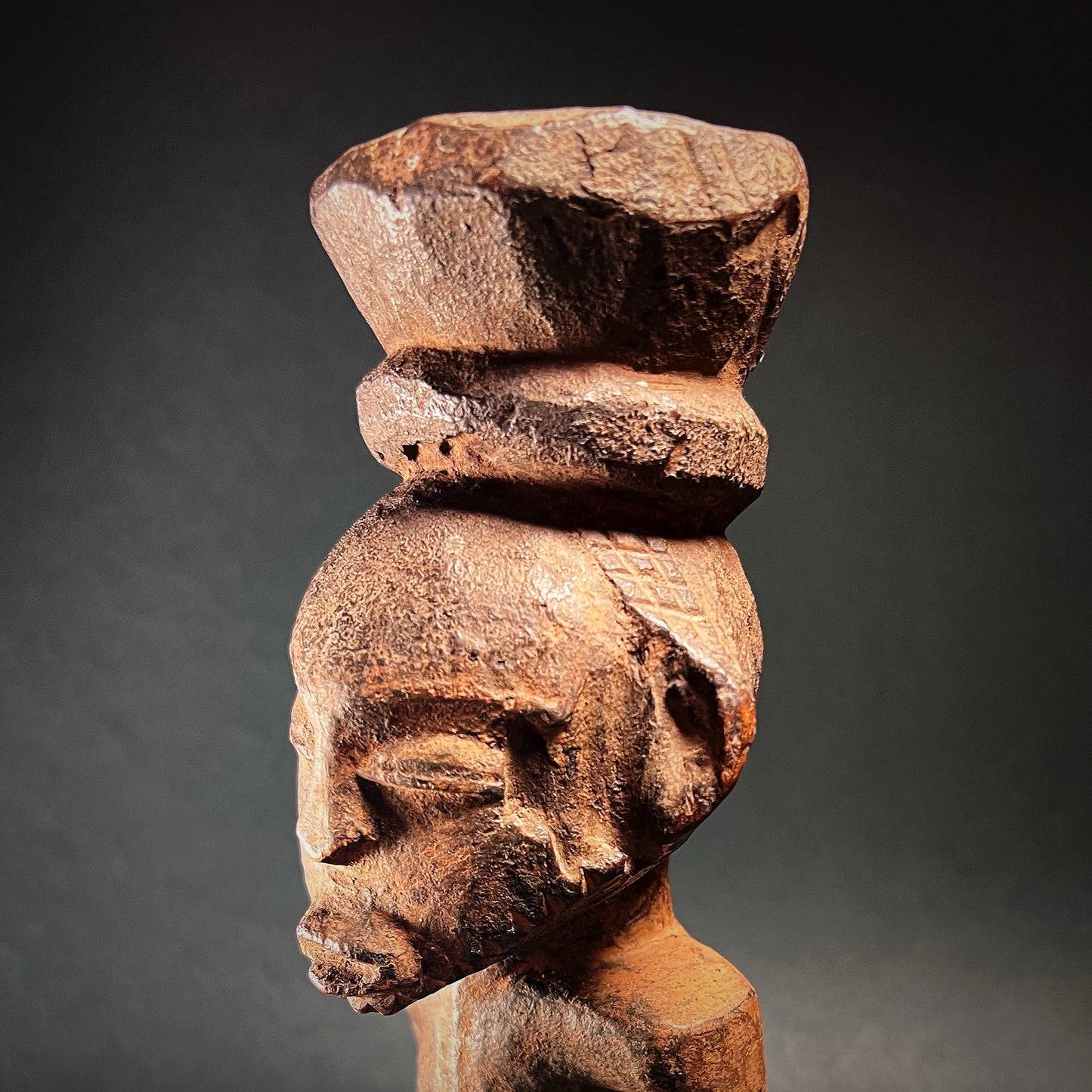

-
Shipping
The shipment will be prepared in the course of 3-5 days and dispatched via Posti Group Oyj or purchased item(s) can be picked up from our shop during the store's opening hours (Tarkk’ampujankatu 4, 00140, Helsinki, Finland). Within the Finland, all items are shipped via Posti Group Oyj unless otherwise requested. We pack the items carefully and mainly in recycled materials because we want to save nature. You will receive the tracking number for your items by e-mail.
-
Returns
Returns and exchange will be accepted within fourteen days (14) of receipt at the purchaser’s cost to include freight and packaging. Items must be returned in the same condition as when they were shipped, and will not be accepted if damaged or altered in any way. Please inform us via email (info@gotanmaailma.fi) or by calling +358408408352 before sending. We do not accept returns more than 14 days after delivery.
